(9023 products available)




















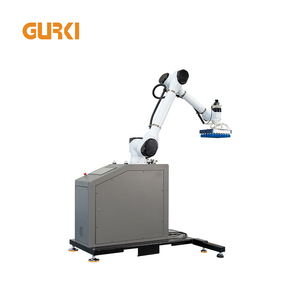
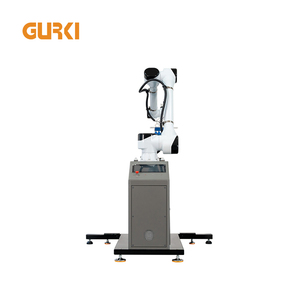
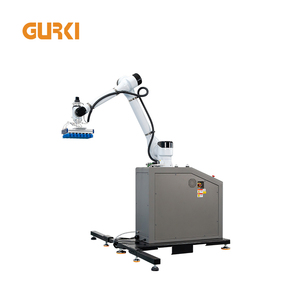

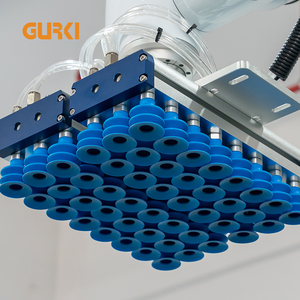
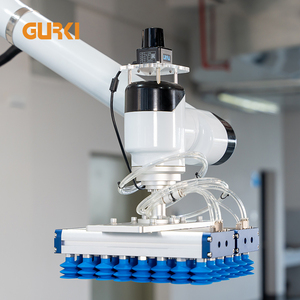


































































































































































A bag palletizer is a machine that stacks bags filled with products on a pallet for storage and transportation. There are two primary types of bag palletizers, robotic and conventional palletizers. Each has its unique benefits and limitations.
Robotic palletizing systems are increasingly popular because they provide great flexibility when it comes to handling different types and sizes of bags. They feature an articulated robotic arm with multiple axes of movement that can pick up and place bags with precision. Robotic palletizers can also accommodate various palletizing patterns and configurations by simply reprogramming the robot. Also, robotic palletizers are easy to integrate into existing production lines. This makes robotic palletizers ideal for facilities that have frequently changing bag types and production requirements.
However, the initial investment for a robotic palletizer is typically higher than conventional models. But this cost is often justified by the versatility and efficiency that robotic palletizers offer.
A conventional palletizer uses mechanical components such as conveyors, pushers, and clampers to stack bags onto a pallet. It can handle large quantities of bags quickly and consistently, making it suitable for high-volume production. Also, the operating principle of conventional palletizers is simple and reliable, which leads to low maintenance requirements and downtime.
However, conventional palletizers are limited in flexibility compared to robotic palletizers. They are more suitable for handling consistent bag types and palletizing patterns. Also, conventional palletizers may require more floor space, so business buyers need to ensure that they have enough space for installation.
There are some hybrid palletizers that combine the advantages of both robotic and conventional palletizers. They feature a robotic arm mounted on a fixed base, which provides the flexibility of a robot while maintaining the high-speed performance of a conventional palletizer. Hybrid palletizers are a great option for businesses that want a balance between flexibility and speed.
Depending on the requirements of the production line, a bag palletizer may have different specifications in terms of capacity, stacking patterns, and more.
Capacity
The capacity of a bag palletizer is determined by its maximum load, which is typically measured in bags per hour. The capacity of a bag palletizer may vary depending on the type and size of the bags being handled, as well as the specific characteristics of the product. For example, a bag palletizer designed for 50-pound bags of cement may have a different capacity than one designed for 25-pound bags of flour.
Stacking Patterns
A bag palletizer can stack bags in a variety of patterns, such as column-stacked, interlocked, or cross-stacked, depending on the specific requirements of the product and the stability needed for transportation and storage. For example, column-stacked bags are often used for products that require ventilation, while interlocked or cross-stacked patterns may be more suitable for products that need to be tightly packed.
Other Specifications
Other specifications of a bag palletizer may include the maximum weight capacity, the size range of bags it can handle, the control system it uses, and more. For instance, the maximum weight capacity of a bag palletizer determines the heaviest load it can handle. The size range of bags a palletizer can handle includes those with different lengths, widths, and heights. The control system allows operators to program the palletizing process, monitor performance, and make adjustments as needed.
Regular maintenance is important for ensuring the optimal performance and longevity of a bag palletizer. Here are some key maintenance tips for a bag palletizer:
Routine Inspection
Operators should regularly inspect the palletizer for signs of wear, damage, or misalignment. They can pay special attention to components like chains, sprockets, bearings, and guides, and promptly address any issues or anomalies that are discovered.
Lubrication
Proper lubrication is crucial for reducing friction, preventing component wear, and maintaining smooth operation. Operators should follow the manufacturer's guidelines to establish a lubrication schedule and apply the appropriate lubricants to all lubrication points.
Cleaning
Regular cleaning of a bag palletizer is also necessary to remove debris, dust, and contaminants. Operators can use compressed air, brushes, or damp cloths to clean the surfaces of the machine and its components. This helps to prevent buildup that could affect the performance of the bag palletizer.
Safety Inspection
In addition to routine maintenance, operators should also conduct periodic safety inspections of the bag palletizer. They can verify the proper functioning of safety features like guards, emergency stop buttons, and interlocks. And ensure all personnel are following safety protocols when operating or servicing the machine.
Bag palletizers are used in various industries that require automatic stacking, organizing, and palletizing of bags. Here are some common usage scenarios for bag palletizers.
In the food and beverage industry, bag palletizing machines are used to stack bags of ingredients, finished products, or packaging materials. They are commonly used in the beverage, snack, and grain industries for palletizing bags of products such as flour, rice, sugar, pet food, and snacks.
Industries involved in agriculture and farming often use bag palletizers to stack bags of seeds, fertilizers, animal feed, and agricultural products. These machines help to streamline the packaging and distribution processes.
Industries that deal with chemical products, pharmaceuticals, and construction materials use bag palletizers to organize and stack bags of powders, granules, or pellets. These machines ensure precise palletizing to meet the strict requirements of these industries.
Industries that manufacture and distribute automotive components often use bag palletizers for packaging small parts and components in bags. These machines help to expedite the assembly and shipping processes for automotive products.
Bag palletizers are commonly used in logistics and warehousing to palletize and prepare bags of goods for storage, shipping, or distribution. These machines help to optimize warehouse operations and ensure efficient handling of bagged products.
The construction and building material industries use bag palletizers to stack bags of cement, mortar, grout, and other construction materials. These machines facilitate the packaging and transport of construction products to various job sites.
The textile and apparel industry uses bag palletizers to stack bags of fabrics, yarns, and garment components. These machines help to streamline the packaging and distribution of textile and apparel products.
When choosing a bag palletizer for sale, there are several important factors to consider. First, it is important to determine the business's bag palletizing needs. This involves understanding the volume of bags that need to be palletized per day or per hour. It also involves the size of the bags. Knowing the output requirements and bag specifications will help narrow down palletizers that can meet the business's demands.
The types of bags being palletized will also affect the choice of bag palletizers. Some machines are only designed to palletize certain types of bags. For example, a robotic palletizer may be better suited for irregular or fragile bags, while a conventional palletizer may be better for handling rigid, uniform bags.
It is also essential to consider the available floor space and layout of the facility. Automated palletizing systems typically require more floor space than manual or semi-automatic systems. However, floor space may still be a concern regardless of the system being chosen. It is important to ensure that the machine will fit in the facility and still allow for efficient material flow and traffic.
Finally, it is important to consider the maintenance and service requirements of the palletizer. The chosen palletizer should be one that can be easily maintained and serviced to ensure consistent operation and minimal downtime. It is also important to ensure that the staff is trained and skilled enough to operate the machine.
Q1: Can a bag palletizer handle bags of various sizes and weight?
A1: Yes, modern bag palletizers are designed to handle bags of various sizes and weights. They come with adjustable guides and programmable controls that can be set to accommodate different bag dimensions and weights. However, the maximum load capacity and speed may vary depending on the specific details of the bag.
Q2: How important is the bag orientation in a palletizing process?
A2: The bag orientation is crucial in ensuring the bags are stacked correctly, and the pallet is stable. Many bag palletizers feature devices or sensors that orient the bags before stacking them. This ensures the bags are placed in the right position and with the right side up. Proper bag orientation enhances the appearance of the pallet and makes it easier to unload and transport.
Q3: Can a bag palletizer be integrated with existing production lines?
A3: Yes, in most cases, a bag palletizer can be integrated with existing production lines. Many manufacturers offer custom integration options to suit different production setups. Business owners can also consult with their engineers to determine the best way to integrate the palletizer with their production line.